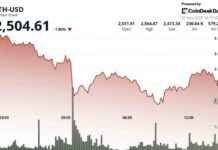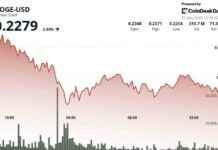An Ethereum whale who previously profited $65 million from Solana is now predicting a 6,000% rally for ETFSwap, describing it as the next significant DeFi competitor to Solana in 2024.
ETFSwap, a presale DeFi token highly praised by Ethereum whales, is gaining attention for its potential to compete with Solana and provide investors with a substantial return on investment. The project is set to launch the first phase of its beta platform soon, offering various features such as DeFi liquidity pools, staking opportunities, and yield farming with rewards of up to 87% APR.
In addition to these features, ETFSwap will also provide users with trading discounts, low transaction fees, and access to a wide range of tokenized ETFs, including popular options like spot Bitcoin, spot Ethereum, bonds, and commodity ETFs. Traders will have the opportunity to utilize a 100x trading booster and AI-powered tools to enhance their trading experience and maximize profit potential.
Furthermore, the ETFSwap platform will offer 24/7 access to trade perpetual contracts and futures of over 6,000 cryptocurrencies, giving users the flexibility to engage in DeFi trading at their convenience. The platform is designed to provide optimal trading liquidity, security, and a seamless trading experience for both institutional investors and individual traders.
As Solana investors seek to diversify their portfolios, many are turning to ETFSwap as a promising investment opportunity, especially after the endorsement from the Ethereum whale. With forecasts indicating a significant rally for ETFSwap, investors are optimistic about the potential for substantial returns in the upcoming crypto summer.
In conclusion, ETFSwap is gaining traction as a top DeFi platform with the potential to outperform SOL and other popular crypto tokens in the market. Smart investors who purchased ETFSwap during the presale period at a discounted price are well-positioned to benefit from the anticipated bull run. To learn more about ETFSwap and join the community, interested individuals can visit the ETFSwap presale platform.
Please note that this article does not constitute investment advice, and readers are encouraged to conduct their own research before making any investment decisions related to ETFSwap or any other cryptocurrency.














